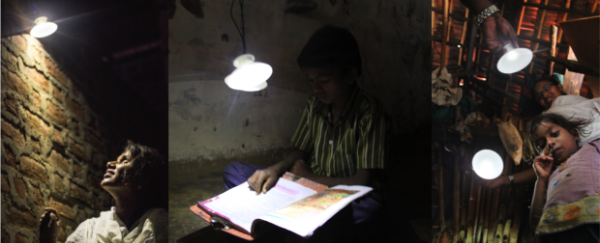Although many of us take for granted the fact that we can simply hit a switch and be flooded with artificial light, around one billion people in the world still live without electricity. This means a lot of people are relying on dangerous and expensive kerosene lamps to provide them with light to study, work and cook after dark.
But a team of engineers from the UK has now come up with a new device called GravityLight that runs simply using the force of gravity.
The set-up is pretty simple, the whole thing works a bit like a pulley - all you need to do is add 12 kg of weight to one end of the bead cord (this can be a bag of sand, rocks, whatever you like), and then lift that weight up by pulling down on the lamp attached to the other end.
Thanks to gravity, the weight slowly descends back down to the floor, transforming potential energy into kinetic energy as it drops. This kinetic energy then powers a drive sprocket and polymer gear train that lights up the LED as it goes. Once the weight gets to the floor, the light goes out and you need to repeat the process, but each pull provides you around 20 to 30 minutes of light, depending on how high you lift the weight up in the first place.
The team is now crowd-funding the second version of GravityLight on Indiegogo, with the hope that they can raise US$199,000 in order to make their light brighter, longer-lasting and easier to use.
The light itself will only cost around US$10. This is a whole lot cheaper than kerosene lamps, which not only pose a high fire risk and spew out carcinogens, they also burn through about 30 percent of a family's income, according to the GravityLight team.
GravityLight will be initially targeted to families in developing countries, with an initial focus on Kenya, and the team is hoping to provide local jobs by creating and selling the lights over there.
Of course, the best thing about gravity is that it's free (well, that, and the fact that it stops us all from floating off into space), so once the initial investment has been made, the lights literally cost nothing to run. We love it when people use simple science to help solve global problems.
H/T to Gizmodo for making us aware of this project.
